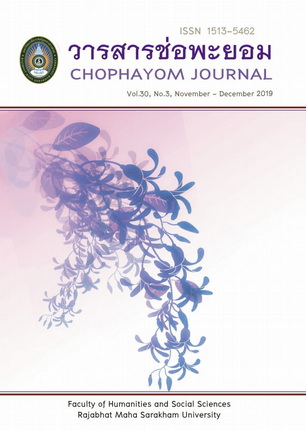企业国际化中的模仿行为研究:回顾与展望
Keywords:
企业国际化,, 组织间模 仿, 进入后阶段, 模仿意愿, 模 仿选择Abstract
摘要:传统的企业国际 化模仿行为研究主要关注国际企 业在投资意愿、区位选择和进入 模式等前中期的决策模仿行为。随着全球企业国际化战略的持续 推进,企业国际化的整体进程逐 渐从“走出去”、“走进去”进 入“留下去”阶段,而其中模仿 行为研究的重心也逐渐转移到国 际企业进入东道国市场后的组织 间模仿。针对上述研究动态,对 国际化前、中和后阶段中国际企 业的模仿行为研究进行梳理,并 总结其中的主要理论流派。基于 现有文献,将企业国际化中的组 织间模仿解构为模仿意愿和模仿
选择,并识别出惯性、环境不确 定、制度距离、行业集中度是模 仿意愿的影响因素,经验、选择 明晰度、企业身份是模仿选择的 影响因素。最后,文章指出未来
的研究方向,包括:空间视角下 的组织间模仿行为、发展中国家 情境下的国际化企业的模仿行 为、制造业企业与服务业企业间 在国际化模仿行为上的异同、开 发组织间模仿的变量测量方法。关键词:企业国际化, 组织间模 仿, 进入后阶段, 模仿意愿, 模 仿选择
References
2.DURAND R, JACQUEMINET A. Peer conformity, attention, and heterogeneous implementation of practices in MNEs[J]. Journal of International Business Studies, 2015, 46(8): 917-937.
3.HUSTED B W, MONTIEL I, CHRISTMANN P.Effects of local legitimacy on certification decisions to global and national CSR standards by multinational subsidiaries and
domestic firms[J]. Journal of International Business Studies, 2016, 47(3): 382-397.
4.LIEBERMAN M B, ASABA S. Why do firms imitate each other?[J]. Academy of Management Review, 2006, 31(2):366-385.
5.DIMAGGIO P, POWELL W W. The iron cage revisited: Collective rationality and institutional isomorphism in organizational fields[J]. American Sociological Review, 1983, 48(2):147-160.
6.FABIAN F, MOLINA H, LABIANCA G. Understanding decisions to internationalize by small and medium-sized firms located in an emerging market[J]. Management
International Review, 2009, 49(5):537.
7.FERNHABER S A, LI D.The impact of interorganizational imitation on new venture international entry and performance[J]. Entrepreneurship Theory and Practice, 2010, 34(1):1-30.
8.DELIOS A, GAUR A S, MAKINO S. The timing of international expansion : Information, rivalry and imitation among Japanese firms, 1980–2002[J]. Journal of Management
Studies, 2008, 45(1): 169-195.
9.LUO Y, TUNG R L.International expansion of emerging market enterprises: A springboard perspective[J]. Journal of international business studies, 2007, 38(4): 481-498.
10.GUILLÉN M F. Experience, imitation, and the sequence of foreign entry: Wholly owned and joint-venturemanufacturing by South Korean firms and business groups in China, 1987–1995[J]. Journal of International Business Studies, 2003, 34(2): 185-198.
11.YENIYURT S, TOWNSEND J D, CAVUSGIL ST, et al. Mimetic and experiential effects in international marketing alliance formations of US pharmaceuticals firms: An event
history analysis[J]. Journal of International Business Studies, 2009, 40(2): 301-320.
12.XIE Z, LI J.Selective imitation of compatriot firms: Entry mode decisions of emerging market multinationals in cross-border acquisitions[J]. Asia Pacific Journal of Management, 2016: 1-22.
13.MAEKELBURGER B, SCHWENS C, KABST R. Asset specificity and foreign market entry mode choice of small and medium-sized enterprises: The moderating influence of knowledge safeguards and institutional safeguards[J]. Journal of International Business Studies, 2012, 43(5): 458-476.
14.ANG S H, BENISCHKE M H, DOH J P. The interactions of institutions on foreign market entry mode[J]. Strategic Management Journal, 2015, 36(10): 1536-1553.
15.OEHME M, BORT S.SME internationalization modes in the German biotechnology industry:The influence of imitation, network position, and international experience[J]. Journal of International Business Studies, 2015, 46(6): 629-655.
16.GIMENO J, HOSKISSON R E, BEAL B D, et al. Explaining the clustering of international expansion moves: A critical test in the US telecommu nications industry[J]. Academy of Management Journal, 2005, 48(2):297-319.
17.LI J, YANG J Y, YUE D R. Identity, community, and audience: How wholly owned foreign subsidiaries gain legitimacy in China[J]. Academy of Management Journal, 2007, 50(1):175-190.
18.YUAN L, PANGARKAR N.Inertia versus mimicry in location choices by Chinese multinationals[J]. International Marketing Review, 2010, 27(3):295-315.
19.LI J, YAO F K. The role of reference groups in international investment decisions by firms from emerging economies[J]. Journal of International Management, 2010, 16(2): 143-153.
20.BELDERBOS R, OLFFEN W V, ZOU J. Generic and specific social learning mechanisms in foreign entry location choice[J]. Strategic Management Journal, 2011, 32(12):
1309-1330.
21.ZAHEER S. Overcoming the liability of foreignness[J]. Academy of Management journal, 1995, 38(2):341-363.
22.GHEMAWAT P. Redefining global strategy:Crossing borders in a world where differences still matter[M]. Harvard Business Press, 2013.
23.REIMANN F, EHRGOTT M, KAUFMANN L, etal. Local stakeholders and local legitimacy: MNEs' social strategies in emerging economies[J]. Journal of International Manag ement, 2012, 18(1): 1-17.
24.BROUTHERS L E, O'DONNELL E, HADJIMARCOU J. Generic product strategies for emerging market exports into triad nation markets: A mimetic isomorphism approach[J]. Journal of Management Studies, 2005, 42(1):225-245.
25.Wu Z, Salomon R. Does imitation reduce the liability of foreignness? Linking distance, isomorphism, and performance[J]. Strategic Management Journal, 2016, 37(12):2441-2462.
26.CAMPBELL J T, EDEN L, MILLER S R. Multinationals and corporate social responsibility in host countries: Does distance matter?[J]. Journal of International Business Stu dies, 2012, 43(1): 84-106.
27.ORDANINI A, RUBERA G, DEFILLIPPI R. The many moods of inter-organizational imitation: A critical review[J]. International Journal of Management Reviews, 2008, 10(4): 375-398.
28.LU J W.Intra-and inter-organizational imitative behavior: Institutional influences onJapanese firms' entry mode choice[J]. Journal of international business studies, 2002,
33(1): 19-37.
29.CHAN C M, MAKINO S. Legitimacy and multi-level institutional environments : implications for foreign subsidiary ownership structure[J]. Journal of International Business Studies, 2007, 38(4):621-638.
30.YANG M, HYLAND M A. Similarity in cross-border mergers and acquisitions : Imitation, uncertainty and experience 13 among Chinese firms, 1985–2006[J]. Journal of International Management, 2012, 18(4): 352-365.
31.SALOMON R, WU Z.Institutional distance and local isomorphism strategy[J]. Journal of International Business Studies, 2012, 43(4):343-367.
32.BRUNEEL J, YLIRENKO H, CLARYSSE B. Learning from experience and learning from others: how congenital and interorganizational learning substitute for experiential learning in young firm internationalization[J]. Strategic entrepreneurship journal, 2010, 4(2): 164-182.
33.FLETCHER M, HARRIS S, RICHEY JR R G.Internationalization knowledge: What, why, where, and when?[J]. Journal of International Marketing, 2013, 21(3): 47-71.
34.RON BOSCHMA.Proximity and Innovation: A Critical Assessment[J]. Regional Studies, 2005, 39(1):61-74.
35.MARQUIS C, BATTILANA J. Acting globally but thinking locally? The enduring influence of local communities on organizations[J]. Research in organizational behavior, 2009, 29:283-302.






